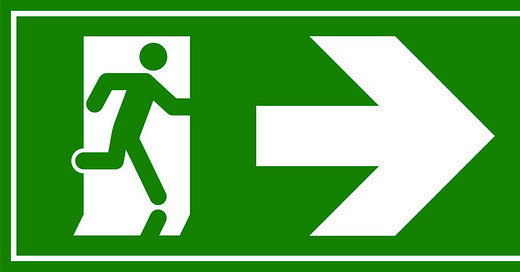Entries are the result of answering four questions. Each question narrows your focus by shortening the time horizon. You start in the historical past and finish at the present moment. This time compression builds on itself, deepening your understanding. To review the four question see here, here here, and here.
The Four Questions:
What has the market done? Answer is the Market Condition.
What’s the market trying to do? Answer is the Market Context.
How good a job is the market doing? Answer is the Market Strength.
What’s most likely to happen from here? Answer is the Market Probability.
The historical past reveals the Condition of the current market. The recent past explains the Context the market moves within. The present illustrates the source of the market’s Strength. And this moment has a specific Probability of success or failure.
Once you enter a trade, your focus shifts to managing the trade for a profitable exit. Too often Retail decides to exit a trade based on news or the emotions of the moment. The result is either losses because they exited to late. Or missed opportunity because they exited to early.
Professional reverse the four questions. New information impacts Probability first and Condition last. It take time for the Condition or Context to change. But Probability and Strength reverse quickly. See below:
Condition - long term - slowest to change - months
Context - intermediate term - slow to change - weeks
Strength - short term - quickly change - days
Probability - immediate - an instant - minutes or hours
It takes time to build some things and they are slow to change. Others develop quickly and change can be immediate.
When you enter the market, you build your analysis and decision process from past to the present. But when you exit your confidence and evidence build from this moment. To an obvious conclusion. The longer we wait, as the evidence builds the greater your risk becomes.
A slow entry can still be profitable, but a slow exit becomes increasingly expensive.
Professionals know that the exit is more important than the entry. A decisive exit determines profits.
Professionals look first for a change in the trade’s Probability. A change in Strength follows shortly. Because bearish reversals move further much faster than bull trends. The support that has sustained the market’s Context and Condition soon breaks. Losses increase that this point.
Retail is often caught by a difficult decision whether to act now or wait. The industry tried for decades to convince clients that losses were temporary. But Professionals know that losses are PERMANENT. See the next post for why losses are permanent and how to explain this to others.
As the analysis that helped you enter the trade begins to reverse, do not hesitate. Time will dissolve your reason for the trade, until it is too late and losses are overwhelming.
Rev.240805 10:00am
The above process played out in several of the major indexes over the last week.
If you did not protect your profits by exiting as Probability changed, Strength weakened, Structure was broken, and the Condition Reversed, consider joining the Mastermind Group. Loses are more costly than the fear of being whipsawed.
NOTE: New posts will be on the second and fourth Tuesday of the month.
If you want to learn about this and more I have two resources for you:
- Online Self-Paced Course: Trade Like A Pro (TLAP) course. Learn to trade like a Professional at your own pace. Read the testimonials here.
- Group Mentoring: Join the Mastermind Group and get the TLAP course for free.
Be well and trade like a pro,
Lloyd
P.S. if you found this of value please like and subscribe, thanks.
If you are already subscribed, please share with others.





